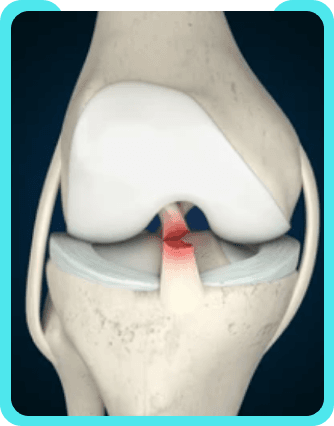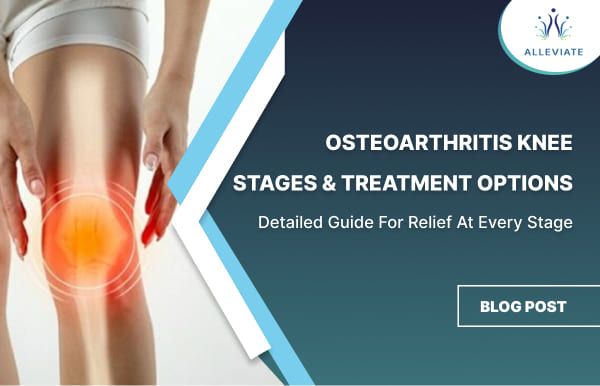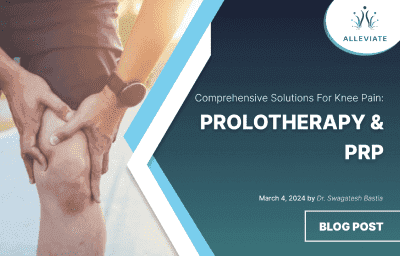
ACL & PCL Tear
- Home
- Conditions
- Knee pain
- ACL & PCL Tear
What are the ACL and PCL Ligaments?
The Anterior Cruciate Ligament (ACL) and the Posterior Cruciate Ligament (PCL) work together to provide stability in your knee. The ACL and PCL ligaments cross each other to form an X to allow for safe flexing and extending of the knee. The ACL and PCL ligaments are the two of four major ligaments in your knee. The other two ligaments are the MCL and LCL.
Treatment for ACL & PCL Tear

The ACL is in the middle of the knee and prevents the shin bone from sliding out in front of the thigh bone. The PCL works with the ACL to prevent the shin bone from sliding backwards under the femur. While most of the sports injuries incurred to these ligaments are minor ligament sprains such as ACL Sprains and PCL Sprains, tears can result and may require surgery.
FAQ'S
- Knee injuries are among the most common sports and general orthopedic injuries – and the most likely to keep you on the sidelines for an extended period of time.
- That’s because the knee is the largest joint and also one of the most complicated in your body – enabling you to flex, bend and rotate your legs. The anterior cruciate ligament (ACL) and posterior cruciate ligament (PCL) are two of its most important components. So, when the ACL or PCL are torn, it can be not only painful but also temporarily debilitating.
- Besides the fact that the ACL is located in the front of the knee and the PCL is located in the back, there are key differences between an ACL tear and a PCL tear that are worth noting.
- Although knee injuries can occur as a result of any physical trauma, those who play high-intensity sports like football, basketball, or soccer are the most likely to sustain an ACL tear. The reason is that those sports require athletes to decelerate quickly and perform twisting maneuvers and the ACL ligament is designed to resist abnormal forward movement of the tibia (shinbone) relative to the femur (thighbone) and rotational forces. This explains why most ACL tears occur without contact.
- The PCL, on the other hand, does the opposite, preventing the tibia from sliding backwards relative to the femur. PCL tears typically occur when there is a direct blow to the front of the tibia, or when the knee hyperextends from an awkward landing.
- While both ACL and PCL tears can be painful initially, the real problem is the lingering instability of the knee joint. The severity of the tear is key. One can overcome the discomfort and instability of a partial tear with systematic and focused rehabilitation of the musculature surrounding the knee. But if the ligament is completely ruptured, that’s another story, possibly requiring reconstructive surgery to restore normal function.
- The principal symptom of an ACL injury is rotational instability. You may be able to walk, even run, in a straight line after an ACL injury, but as soon as you attempt to turn, your knee collapses.
- With a PCL injury, instability is also an issue, but to a lesser degree. In fact, some patients can recover by moderating their activity and by undergoing focused muscle conditioning instead of surgery.
Treatment for minor ACL or PCL Sprains usually includes the RICE Method: Rest, Ice, Compression and Elevation. Physical Therapy and stretching can be helpful to strengthen the ligaments and also prevent future injury.
Not all ACL or PCL Tears require surgery. While at times, surgery may be necessary; treatment for ACL or PCL Tears may also include PRP Injection, Physical Therapy, Pain Management, stabilization, and strengthening and motion exercises.
At Alleviate, personalized treatment plans for knee injuries or sports injuries are designed for each individual patient by our expert staff.
Video Spotlight
Blog
Surgery-Free Solutions
Expert Tips for Pain Management
Testimonials
Words From Our Patients
The treatment was very good and the doctor Faraz Ahmed was very kind to the patient and explained clearly the procedure of knee bilateral ha & treatment And we were advised to do physiotherapy. We are very much satisfied. We would recommend this alleviate pain clinic. Thank you
Got treatment of Treatment and HA for right knee arthritis a month ago and finding good relief from pain. Was treated by Dr Swagtesh Bastia who explained very well about the injections and the treatment was painless. The front desk staff were very kind and very helpful and physiotherapy was also done expertly, overall good experience
Alleviate Pain Management clinic has been a godsend for my mom's knee pain. She has been treated by Dr. Wiquar Ahmed. The attentive staff provided personalised care, and after her treatment, she's feeling remarkably better. Thank you for giving my mom the relief she deserves!
The clinic is super clean with a great OT and most importantly all the staff here are very helpful and considerate. My gratitude to Dr Roshan, the nurses, and support staff - they were always available to assist with any issues post procedure and they even made an extra effort to make a home visit for a follow up check-up. This team here is the perfect example of healing and care with a human touch. Thank you!!!!!
My wife had knee pain I have visited alleviate pain and consulted doc santhoshi now she is able to walk pain free and can do her daily activity than before.the physiotherapist here Dr akhila also helped her with few exercises and the staff here Abdul explained all the procedures well . Thank you PPL can visit here for pain relief







